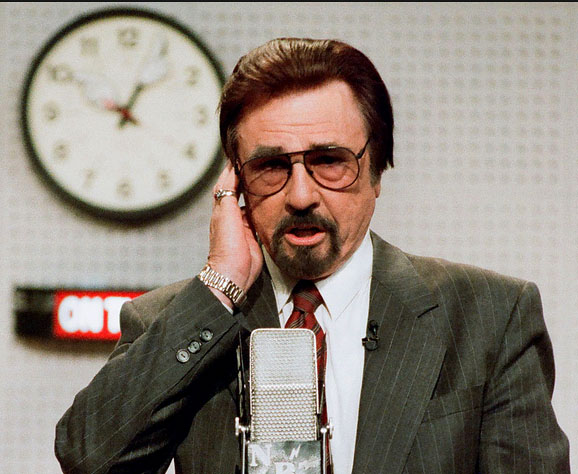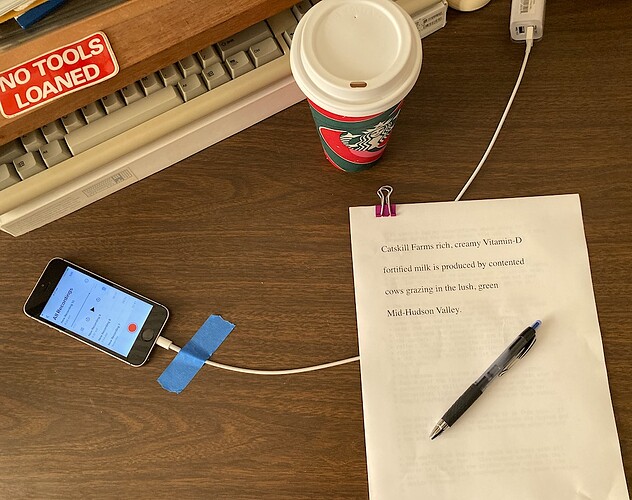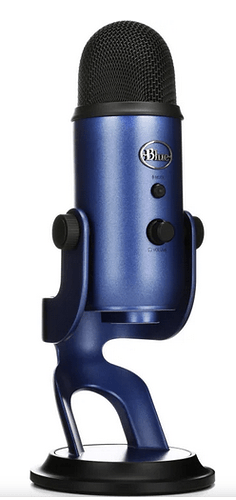I’m using Audacity 3.6.1 on an M1 Mac with Sonoma 14.5. When attempting to listen to audio over my PLT Focus, I had to re-open Audacity three times to get it to even recognize the headset as a playback device. Once selected, whenever I start the audio playing, it takes four seconds for it to remember where the headset is and start playing the audio.
That’s because it’s not a headset. It’s a bi-directional digital communications transmission channel that happens to carry headphone traffic, You usually set these up in the network and WiFi section of the computer, not the sound section.
Also, depending on the production, you may need to connect your headset to your microphone or microphone interface. BlueTooth won’t do that.
I recommend strongly wired headsets or headphones for sound production.
Koz
You might also try rolling the machine back to Audacity 3.4.2 and see if that helps. Audacity 3.6 has been having some serous problems.
Make sure to Tools > Reset Configuration when you get ithe replacement settled.
Koz
I rolled back to 3.6.0, and it didn’t have this issue. This is new to 3.6.1. Is there a log I can post?
I actually do hard-wire for recording, but I’m just doing an audiobook, so the pathetic PLT is optimal for fixing timing issues.
So you know.
Only an Audiobook? Many people on the forum would kill to be able to do that.
I’m one of the audiobook elves. What kind of timing issues? The instant you go digital transmission you invite timing problems. You’re not taking all-the-natural-breaks-out-of-the-speech-are-you? That’s a current “not breathing” fashion I’m not fond of.
I occasionally visit the Airline Videos Live people on the hill outside LAX. They can’t listen to themselves, the production music, and the support voices. Can’t be done. The offsets and delays drive you crazy.
Are you using the headset microphone? I believe strongly that you can use almost any kind of microphone in a quiet, echo-free room. ACX likes all the chapters to match and have no distractions.
Past that you can do whatever you like.
Koz
“Only” as in “not trying to sing to music.” My wife and I did the “cut out every pause” technique in our 2005 podcast “Intellectual Icebergs.” Totally inappropriate for audiobooks. ![]() I’m standardizing on a .3 second pause between sentences, longer when I want the audience to think about something, shorter (sometimes non-existent) for “he said” attributions. I replace all breaths with an appropriate period of room noise, unless the breath is in character.
I’m standardizing on a .3 second pause between sentences, longer when I want the audience to think about something, shorter (sometimes non-existent) for “he said” attributions. I replace all breaths with an appropriate period of room noise, unless the breath is in character.
I’m using a Yeti Blue for recording in an audio bunker in my basement. Using the Blue, I could listen to myself when using expensive recording software, but Audacity has a delay that absolutely kills my ability to listen and talk at the same time. This is resulting in a lot of sections where it’s easy to tell that I had to splice a replacement sentence in (inconsistent vocal quality and microphone technique), and I’m still trying to figure out how to compensate.
Oh, also, I should state that I’m recording my own book as a podcast. Nothing so glamorous as being paid for it. ![]()
Do you do audiobooks? What’s your setup look like?
I got insanely lucky. The original owner of the house had a kid that played drums, so the tiny third bedroom is soundproofed.
I submitted to ACX back when they would evaluate a short performance sample. The reviewer said my sound file was practically perfect in every way, but my voice could use far fewer lip smacks, tongue ticks, and glottal stops. I kept the glottal stops and the day job.
Because I have a studio, I can use anything for a microphone as long as I used the same one for the whole book.
And that brings us to recording on my iPhone.
I can produce voice tracks that pass ACX technical standards with that.
There is a trick to it. One of Voice Memos’ options is Lossless Compression. No processing damage. And it does have gentle peak limiting (that I actually measured) so I never have to worry about peak and tip overload and ticking.
I just have to be careful not to drop it down the toilet.
Whose model is someone telling you a fascinating story over cups of tea.
I got that last part. When you fluff something, leave the recorder running, look back to the next even sentence or theatrical break and read it again while your pitch, emphasis, spacing, theater, and rhythm still match. I agree. Doing it later is a nightmare. I don’t know of any good way to do that.
You can rarely listen to the computer while you’re performing. There is always going to be a delay or other problem. I think I’m losing you there. If you’re not overdubbing—recording over a backing track—what are you listening to? Why aren’t you speaking into your Yeti plus headphones plugged into Audacity?
No surprise you can strip away many voice problems by being able to hear yourself in real time.
Koz
Good description.
I do that, but I get into a flat headspace, and no amount of repetition can undo that. When I listen later, I’m hyper-critical and have better ideas for how it should be inflected. I need to figure out what a proper glottal posture feels like and stick to it.
Transport Options → Enable audio input monitoring
In Audacity, it has a half second delay. Monitoring in Protools has about a tenth of a second delay, just enough that I’m not talking over myself, but not so much that I’m fighting my own echo. Apple’s AU lab is supposed to be able to enable hardware level monitoring, but I haven’t figured that out yet.
Color me jealous. I had to build a portable pop-up tent for echo elimination, and do most of my recording in between other people’s use of the basement bunker.
I wouldn’t have thought you can record on a cell phone, though. I guess a microphone is a microphone to a cell phone. I use a Mac Air, and think it’s optimal. It lets me delete what I just recorded when I biff it instead of having to listen through it on an editing pass.
Your reference is screaming at your Uber order on a busy street in a high wind.
That is Pressure Zone Configuration where placement on the desk halves the electronic noise and doubles the high quality voice. Couple that with Lossless recording format, the carpeted studio, no neighbor below me, and my dulcimer tones.
Lucille is my Macbook Air. I love that thing. Is that the microphone you’re using?!?!?
I admit I never tried actual theatrical reading on Lucille. But yes, I can see why that would limit your choice of real time listening.
You could always do the ear cupping thing.

That’s why they used to do that. No real-time headphones.
`
I used to make up email stories about the people at work based solely on their name. They turned out to be popular and I was shocked to learn some people saved them. My best one was Elizabeth Beresford. I think she works in accounting on the second floor. I’ve never met her. I made her into an Agatha Christie style writer who just barely missed sailing on the Titanic.
Elizabeth Beresford was born in 1868 of a Vicar and his wife in the dull but picturesque and grandly named English village of Smithfield-Stilton Upon Rye in Cornwall.
Points for getting the Easter Egg.
I gotta set up and record that whole thing one day.
Koz
Not kidding by the way, although that picture is a festival of mis-direction. That is really Gary Owens who was a real announcer for Saturday Night Live TV show on NBC. The official, published name of the show is “Saturday Night” not Saturday Night Live but everybody with a pulse adds the “live.” Except Owens who, being a professional, announces it “Live from New York, It’s Saturday Night!”
He’s announcing into that big metal classic RCA 44BX microphone, right? No actually, his real microphone is that tiny black lavalier thing hooked to his left lapel. He’s standing in an NBC announce booth, right? No that’s a set. The production has to line up that stuff in the background (the pegboard is real), Owens, the microphone, and not have to shoot through two panes of soundproof glass with bad lighting.
The cupped hand is real. Try it. You can get a better sense of your pitch and delivery than without it.
I gotta try recording on Lucille. Obsessive Engineer will point out Lucille’s microphone is (are) those two tiny black dots to the left of the Shift and Caps Lock keys. It’s not next to the screen any more.
Also Lucille has much better playback sound than my much larger and older Mac Book Pro. The MBP tried to use real speakers astride the keyboard. Lucille uses powerful compression drivers under the keyboard. I can listen to a movie with those.
Next time you’re set up with your MBA, record a ten second voice test and post it.
https://www.kozco.com/tech/audacity/TestClip/Record_A_Clip.html
Koz
I want to hear your dulcimer tones.
Koz
I don’t actually use my Air microphone for recording. I plug the Yeti Blue into it. I have to restart Audacity every time I plug a new microphone or headset into the laptop, and sometimes I accidentally leave it recording off of the laptop mic. The difference is quite tangible, but maybe only in side-by-side comparison.
You can experience my dulceticity at thaumechanic.substack.com (just skip the annoying subscribe page). I’ll try the testclip thing later this evening.
Ummm. Correct me, but the Yeti has a wired headphone connection in the bottom. Turn Audacity’s foldback sound channel off and the Yeti should feed you to yourself, perfectly clear, with no echo.
No, you can’t use Blue Tooth headphones.
The Yeti will also mix a backing track playback from Audacity with your real-time live voice—while Audacity is recording your clean voice. That’s overdubbing. That has to be set up to get all the timings right, but it does work.
Koz
I can listen to a story in that voice.
Koz
Yes, the Yeti has the built-in jack, but I haven’t figured out how to get zero-time echo into the headset. I did find the Recording → audible input monitoring checkbox, but I’m getting about a tenth of a second delay on that. It’s an improvement over the last time I tried, but still distracting. I guess I’m spoiled by hardware monitoring.
Let’s try this insert thing…
I think that worked. Your voice sounds solid. What have you worked on?
Thanks. ![]() I’d like to get good at this, but I’ll settle for “not too distracting from my writing.”
I’d like to get good at this, but I’ll settle for “not too distracting from my writing.”
Nor probably will you. It is understood that hardware management inside the computer is never perfect. Any discussion of an all-powerful software package always degenerates to how much it misses zero time monitoring.
Koz
That solves that, I guess. You just can’t beat light speed communication with digital processing. I was just hoping that the Yeti had built-in hardware that could shunt part of the analog audio signal to the mic jack. Maybe something in the higher range of microphones has that, but until I get rich and famous, I’ll just cope.
I read that three times. The Yeti converts your microphone signal to digital and ships it off to the computer. It turns some of the analog around internally for its headphone signal. Upper tier microphones didn’t used to do that and the user base yelled a lot.
The Yeti takes playback sound from Audacity and also ships that to its analog headphones. This gives you overdubbing. Mix your live voice with drum, rhythm, or other backing track. Yes, Audacity has to be very intentionally set up to do this since the backing track has to be shipped off before it’s needed because of digital delays. That’s not how it actually does it, but the real magic makes my head hurt.
So in your particular case, you are introducing an unexpected digital layer. We would note that fancy-pants BlueTooth headphones don’t work, either.
Someone recently posted they were sorry about presenting a problem we couldn’t fix. I keep those around for future reference. I would exhibit the one audiobook reader who in spite of our objections, insisted he was going to carefully edit his performance one word at a time.
What color is your Yeti? We note that it’s possible to buy one painted blue.
That would make it a Blue-Yeti-Blue. I don’t know how Product Sales avoided calling it that.
Koz
Oh, totally my bad. I meant the headset jack, not the mic jack. So it does have a live shunt to the headphones? Maybe I can reinstall Protools and see if I was imagining things.
One word at a time. Wow. Do you work for Audacity? Honestly, if I were to ask them to solve something, it would be the need to restart Audacity it when I plug my mic in. I presume that’s bad enough that others have reported it, but this issue seems more specific-hardware-oriented. I used to write audio processing software for Avaya, so I’m always tempted to dip into the code base, but I don’t need another hobby.
“IT” being the Yeti. Not Audacity.
The Yeti instructions will not let me copy/paste and the forum will not allow PDF instruction manuals. The instructions on page 5 are clear that the Yeti analog headphone output includes a copy of the microphone sound. The computer isn’t involved.
Koz

